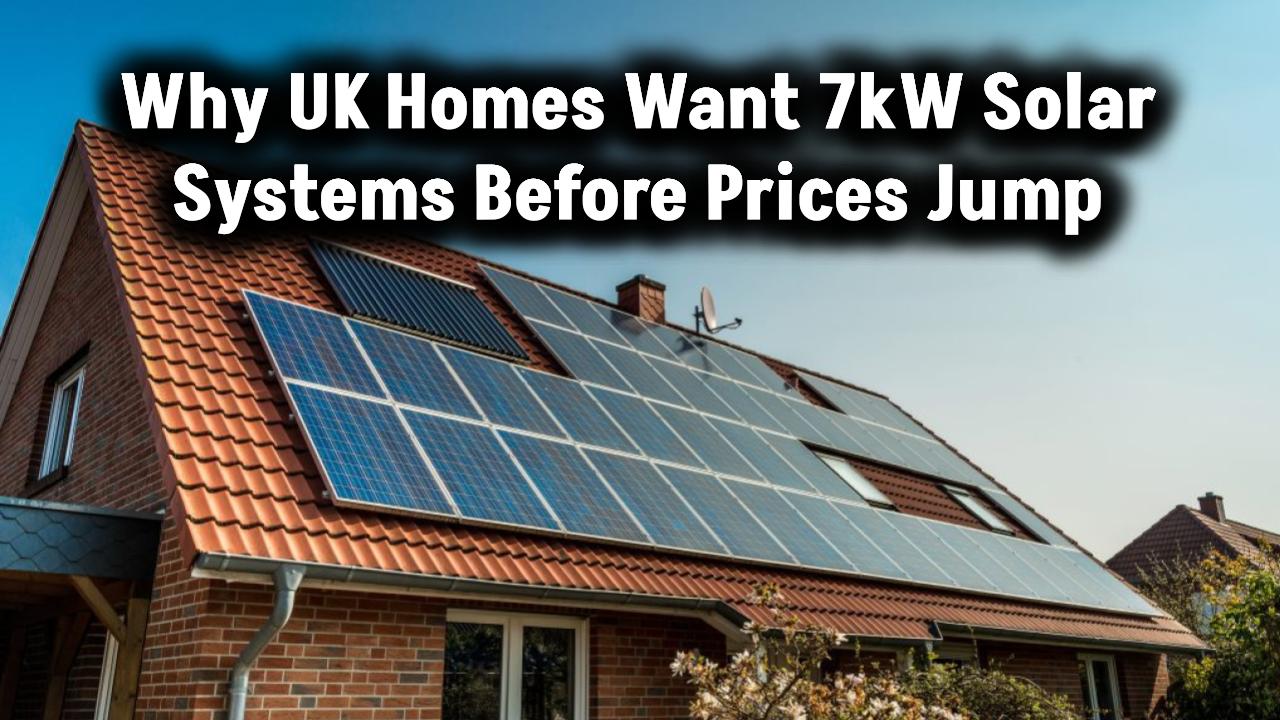
When it comes to home energy efficiency and reducing electricity bills, one of the most common questions people ask is: “How many solar panels do I really need?” This simple question, if answered properly, can save homeowners thousands of dollars and help reduce their carbon footprint. Whether you’re a homeowner thinking about going solar, or a professional installer guiding your clients, understanding your actual solar needs is key.
In this article, we’ll break down exactly how many solar panels your home really needs, using real-world examples, simple math, and data from trusted sources. From energy usage to sun hours, we’ll walk you through everything step-by-step. Plus, we’ll cover financial tips, battery storage, solar system design types, and emerging technologies that can help you get the most out of your investment.
Also Check: They Said Solar Panels Cut Bills to Zero – But Here’s the Hidden Cost UK Homeowners Are Discovering
Why It Matters: The Cost of Guessing
Guessing how many solar panels your home needs is like ordering shoes without knowing your size. Too few, and you’re still paying the utility company. Too many, and you’ve overspent on panels that won’t ever pay for themselves. By calculating your home’s real energy needs and matching them to the right number of panels, you ensure optimal efficiency and return on investment.
Step-by-Step Guide to Calculate Solar Panel Needs
1. Know Your Energy Usage
Take a look at your electricity bill. You’ll see your monthly energy consumption listed in kilowatt-hours (kWh). The U.S. average is around 877 kWh/month or 10,524 kWh/year.
Pro Tip: Use your past 12 months of bills to get a yearly average. This accounts for seasonal fluctuations like AC in summer or heating in winter.
2. Understand Sunlight Availability
Different locations get different amounts of sunlight. This is measured in peak sun hours per day.
| City | Average Peak Sun Hours |
| Phoenix, AZ | 6.5 |
| Los Angeles, CA | 5.5 |
| Denver, CO | 5.3 |
| New York, NY | 4.0 |
| Seattle, WA | 3.5 |
You can find your local average using this NREL Sunlight Map.
3. Calculate the System Size You Need
Here’s a simple formula:
System Size (kW) = Annual Usage (kWh) / (365 x Peak Sun Hours)Example: If your home uses 10,500 kWh/year and you live in LA with 5.5 sun hours:
System Size = 10,500 / (365 x 5.5) = 5.23 kW4. Estimate the Number of Panels
Most solar panels today produce between 300 to 450 watts. To convert kilowatts to watts, multiply by 1,000.
Number of Panels = (System Size in kW x 1,000) / Panel WattageIf using 400W panels:
Panels = (5.23 x 1,000) / 400 = 13.08 ≈ 14 panels5. Consider Future Energy Needs
Are you planning to buy an electric car? Adding a hot tub? Your energy needs could increase, so consider adding 10-20% capacity if your budget and space allow.
Also Check: Scientists Created This Tiny Solar Molecule—It Might Replace Your Power Company
Real-World Examples
Example 1 – 1,500 Sq. Ft. Home in California
- Monthly usage: 900 kWh
- Annual: 10,800 kWh
- Sun hours: 5.5/day
- Panel size: 400W
- Panels needed: 14
Example 2 – 2,500 Sq. Ft. Home in Texas
- Monthly usage: 1,200 kWh
- Annual: 14,400 kWh
- Sun hours: 6/day
- Panel size: 400W
- Panels needed: 17 to 18
Other Key Considerations
Roof Space
Make sure you have enough space for your system. A standard 400W panel is about 6.5ft x 3.25ft, or 21 square feet. Multiply by your panel count to estimate space needs.
Efficiency vs. Quantity
High-efficiency panels cost more but require less space. Brands like SunPower or LG offer panels with up to 22.8% efficiency.
Incentives and Credits
The Federal Solar Investment Tax Credit (ITC) covers 30% of the system cost through 2032. Check state-level incentives via DSIRE.
Battery Storage Options
Adding battery storage like a Tesla Powerwall or LG Chem RESU can help store energy for nighttime use or grid outages. This increases your energy independence.
Solar System Types
- Grid-Tied: Connected to your utility grid (most common).
- Off-Grid: Requires batteries and backup generators.
- Hybrid: Combines solar, batteries, and grid power for flexibility.
Financing Options
- Cash Purchase: Higher upfront cost, but best return on investment.
- Solar Loan: Spread cost over time with fixed payments.
- Lease/PPA: Low upfront, but you don’t own the system.
Future Technologies to Watch
- Bifacial Panels: Capture light from both sides for more output.
- Perovskite Solar Cells: Promising higher efficiency at lower cost (still in development).
- Smart Inverters: Improve energy management with real-time tracking.
(FAQs)
Q1. Can I go off-grid with solar panels alone?
Not easily. Most homes still rely on grid-tied systems unless you also install a battery system like Tesla Powerwall.
Q2. What if I produce more energy than I use?
With net metering, you get credited for the extra energy you send to the grid. Policies vary by state.
Q3. How long do solar panels last?
Typically 25 to 30 years. Most come with warranties covering performance for that period.
Q4. What maintenance do panels need?
Very little. Clean them a few times a year to remove dust, pollen, or bird droppings. Most systems are low-maintenance.
Also Check: The Future Is Here: Why Hybrid Solar Heat Pumps Will Dominate Home Energy








